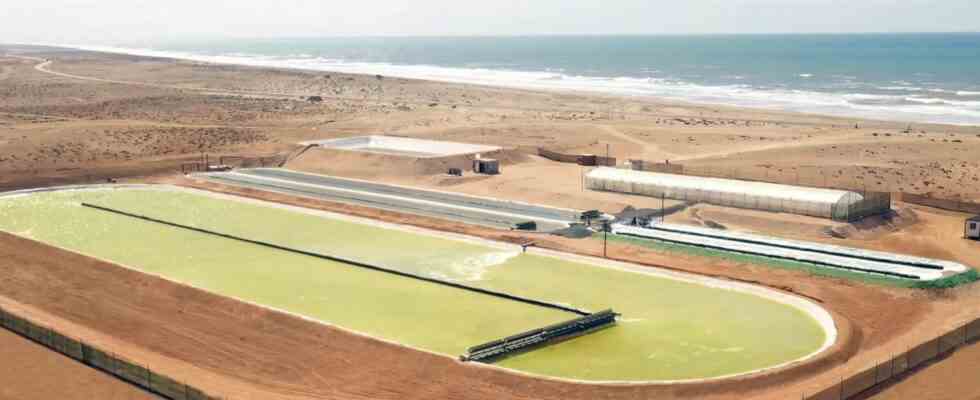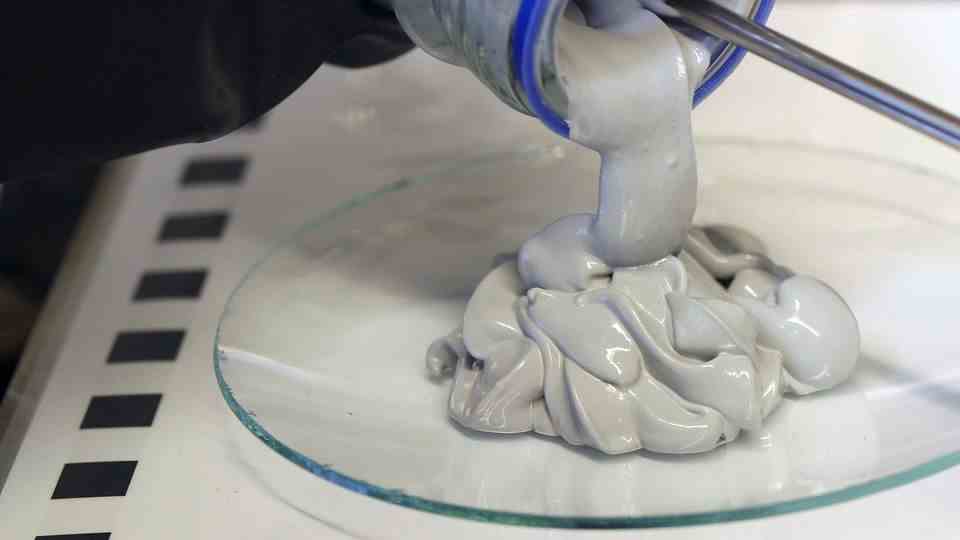CO2 reduction
Climate savers at low cost – algae soup to reverse global warming
Brillant Planet plants take up much less space than natural methods of reforestation.
©PR
More biomass means less temperature rise. Brillant Planet grows algae at turbo speed – only sun and sea water are needed for this. The costs per ton could be paid for with the CO2 tax as early as 2023.
Savings and regenerative energies can ensure that more and more CO2 does not get into the atmosphere and further drives climate change. However, this cannot be used to reverse the CO2 increase that has already taken place. This can only be achieved if CO2 is removed from the atmosphere again. This can be done in a very technical way, such as when CO2 is injected into underground storage, or in a natural way, such as through reforestation. After all, by the time of the dinosaurs, coal, natural gas, and oil also existed in the form of vast forests. The problem with this is that the natural process of forming biomass in the form of trees takes a long time and requires a lot of space.
Very cheap procedure
Brillant Planet works on a middle ground between nature and technology. The company grows algae in large tanks. Algae grow much faster than trees, this has been known for a long time. But Brillant Planet brings important innovations into play. The conversion should be relatively cheap. The company wants to bring the price of a ton of CO2 removed from the atmosphere below $50. That would be 46 euros. The price of the CO2 tax is currently 30 euros per tonne. The price for one tonne of CO2 is increased every year and should already cost 55 euros per tonne in 2025. Such a CO2 cycle could be financed purely from tax revenue.
And another plus point: The process does not require fresh water, but it does require a lot of solar power. This is a crucial factor for many regions; the test facility is in Morocco. The algae tanks can be set up in desert-like regions near the sea. As a side effect, they would also help to lower the mineral levels in the coastal waters back to pre-industrial levels. Food or animal feed could be obtained from the algae. In order to permanently bind the CO2, it would make more sense to process it into materials or humus. In this way, the soil quality around the sites could also be improved.
Giant plants are possible
The type of systems is practically infinitely scalable. Brillant Planet promises an affordable method that can sequester carbon on a gigatonne scale. The algae only need solar energy and sea water as “feed”. In order for them to grow quickly, a plant consists of a system of ponds and pipes. The algae soup needs to be constantly “stirred” in order to supply air and thus CO2. The energy required for this is produced on site by solar systems.
“We have to move very large amounts of seawater, and that takes energy, but we’ve worked to make the system extremely energy efficient. So most of the system is gravity-fed from one pond to the next. We work with the University of Southampton to optimize every aspect of the paddlewheels and ponds, but we need to raise the water from sea level to a few meters above sea level,” CEO Adam Taylor told TechCrunch. “In this process, we deacidify the seawater. So for every unit of seawater that we raise, we deacidify the equivalent of five units of seawater to pre-industrial levels.”
A three-hectare plant in Morocco has been in operation for four years. Now the proceeds from a round of financing are to be used to build a 30-hectare facility that can already be operated commercially.
Source: techcrunch, Brilliant planet




